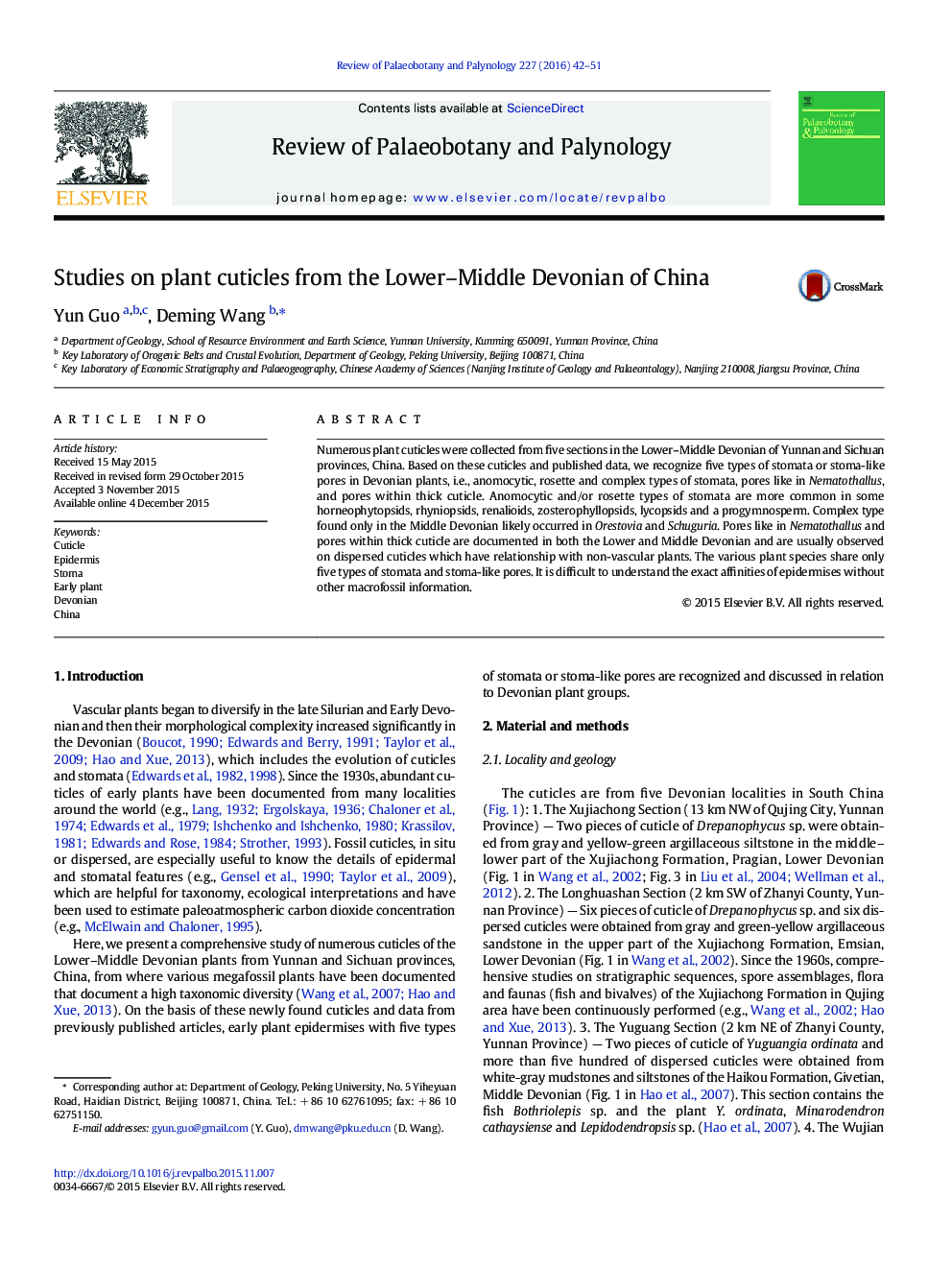| Article ID | Journal | Published Year | Pages | File Type |
|---|---|---|---|---|
| 4750118 | Review of Palaeobotany and Palynology | 2016 | 10 Pages |
•We recognize five types of stomata and stoma-like pores in various Devonian plants.•Anomocytic type followed by rosette type is most common in the Devonian.•Complex type of the Middle Devonian likely occurred in Orestovia and Schuguria.•Two types of pores have relationship with non-vascular plants.•It is hard to know affinities of dispersed cuticles without other information.
Numerous plant cuticles were collected from five sections in the Lower–Middle Devonian of Yunnan and Sichuan provinces, China. Based on these cuticles and published data, we recognize five types of stomata or stoma-like pores in Devonian plants, i.e., anomocytic, rosette and complex types of stomata, pores like in Nematothallus, and pores within thick cuticle. Anomocytic and/or rosette types of stomata are more common in some horneophytopsids, rhyniopsids, renalioids, zosterophyllopsids, lycopsids and a progymnosperm. Complex type found only in the Middle Devonian likely occurred in Orestovia and Schuguria. Pores like in Nematothallus and pores within thick cuticle are documented in both the Lower and Middle Devonian and are usually observed on dispersed cuticles which have relationship with non-vascular plants. The various plant species share only five types of stomata and stoma-like pores. It is difficult to understand the exact affinities of epidermises without other macrofossil information.
